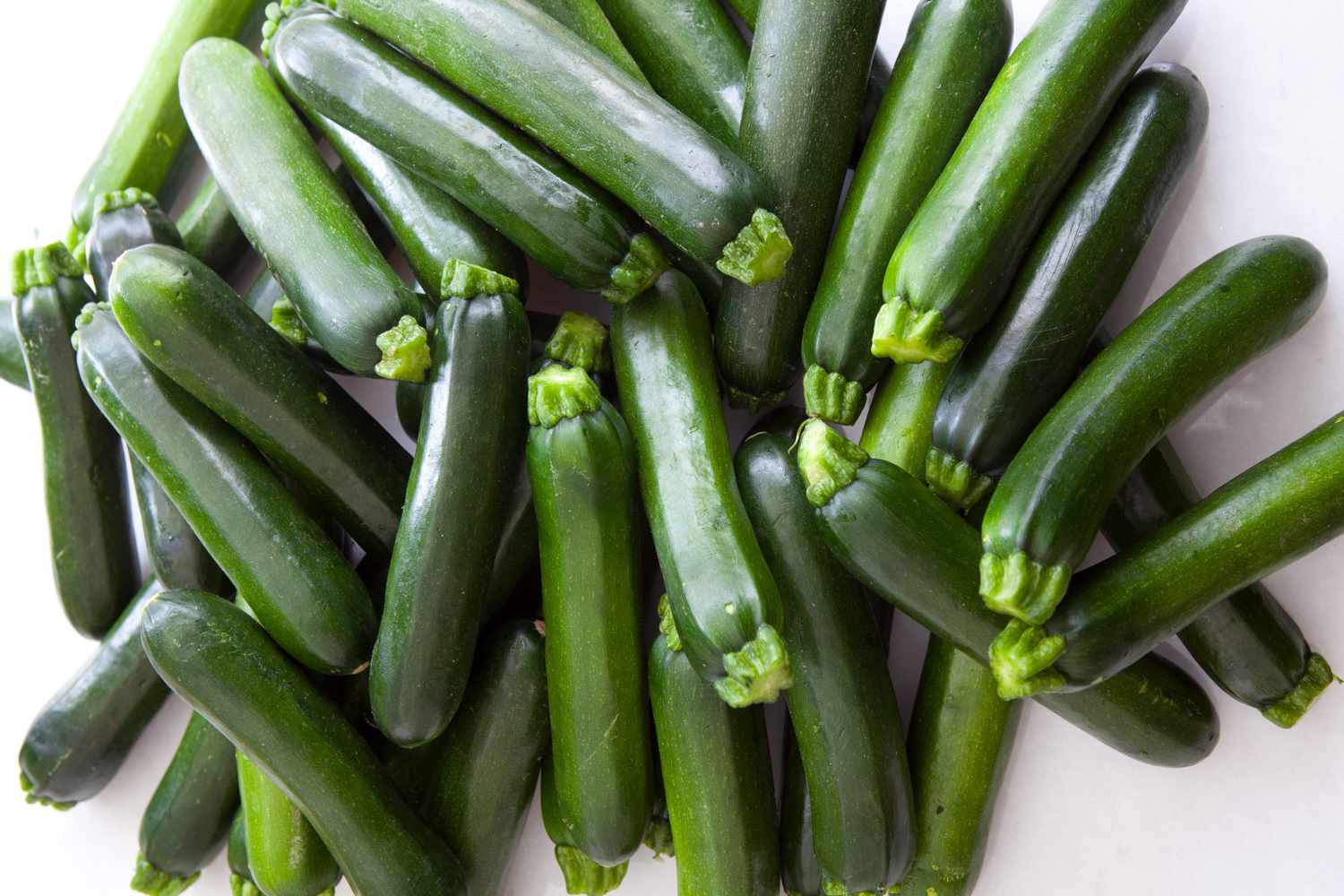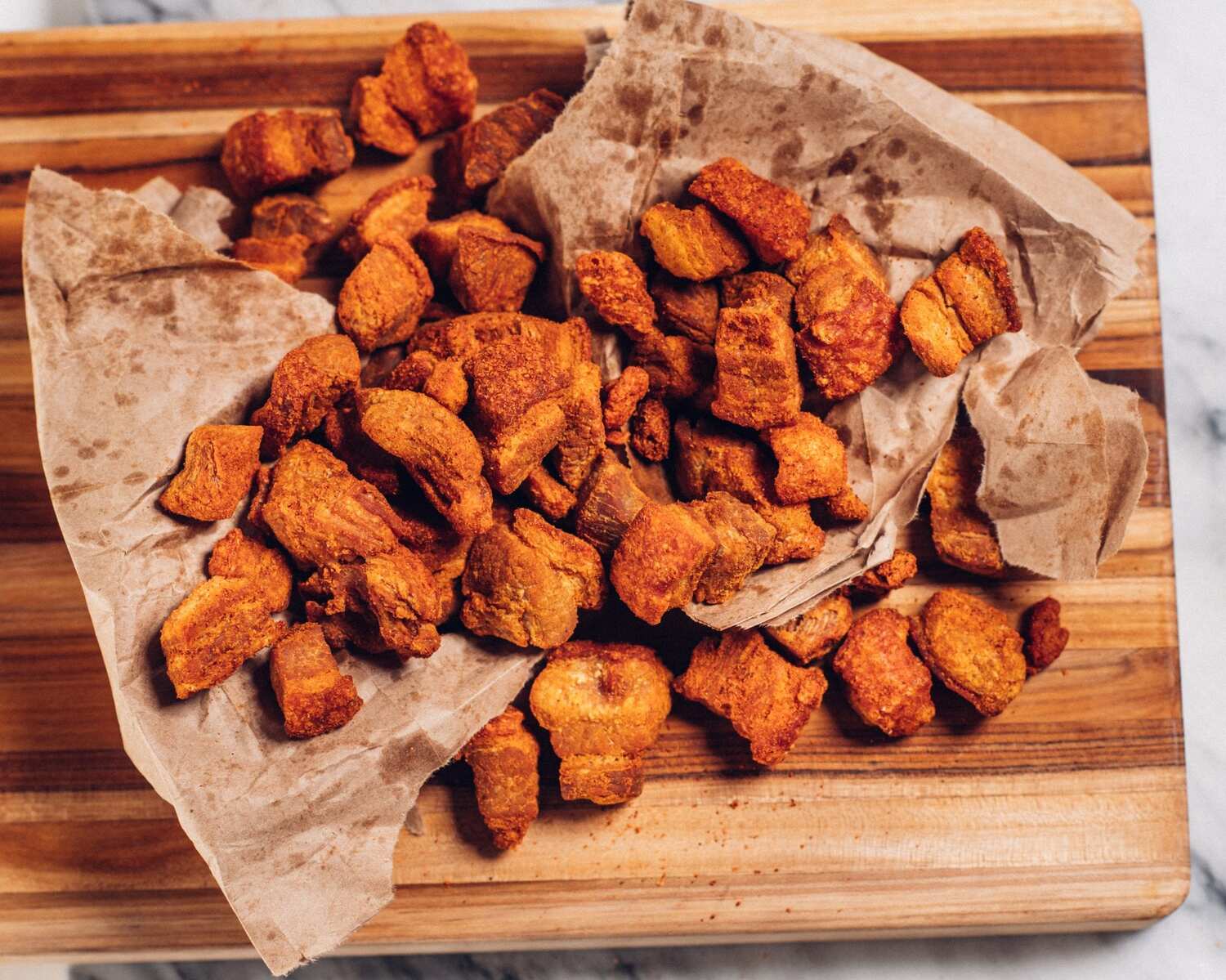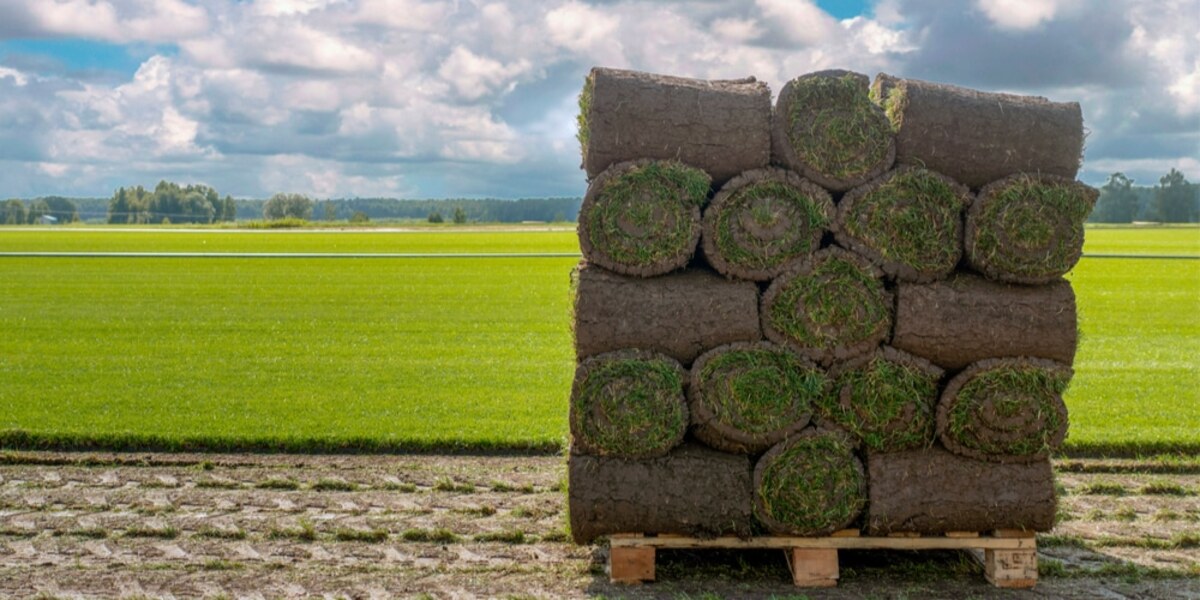

Articles
How To Store Malasadas
Modified: December 7, 2023
Learn how to store malasadas and keep them fresh for longer with our informative articles on proper storage techniques and tips.
(Many of the links in this article redirect to a specific reviewed product. Your purchase of these products through affiliate links helps to generate commission for Storables.com, at no extra cost. Learn more)
Introduction
Welcome to the wonderful world of malasadas! These delicious Portuguese-inspired donuts are a treat you won’t want to miss. But what happens when you have more malasadas than you can eat in one sitting? That’s where proper storage techniques come in handy.
Storing malasadas correctly will help preserve their freshness and flavor, ensuring that you can enjoy them for longer periods. In this article, we will guide you through the process of storing malasadas to maintain their taste and texture. Whether you want to store them at room temperature, in the refrigerator, or even freeze them for extended shelf life, we’ve got you covered.
But first, let’s quickly delve into what malasadas are and why they are so beloved. Malasadas are a type of fried doughnut that originated in Portugal and were brought to Hawaii by Portuguese immigrants. These fluffy, melt-in-your-mouth treats are typically round in shape and are coated in sugar. They can be filled with various delectable fillings, such as custard, chocolate, or fruit.
The popularity of malasadas in Hawaii has made them a staple in the local cuisine and a must-try for visitors. Whether you’re consuming them fresh from the bakery or planning to store them for later, knowing the best practices for storing malasadas will keep them tasting their best.
So, let’s dive into the nitty-gritty of how to store malasadas properly, ensuring that they stay soft, fluffy, and full of flavor.
Key Takeaways:
- Properly storing malasadas is crucial to maintain their freshness and flavor, whether at room temperature, in the refrigerator, or frozen. Choose the right container, prepare them carefully, and follow the recommended storage methods to enjoy these delightful treats for longer periods.
- Thawing frozen malasadas properly is essential to ensure they regain their delightful texture and flavor. Whether thawing in the refrigerator or at room temperature, follow the recommended techniques to savor the deliciousness of these Portuguese-inspired donuts.
Read more: How To Store Store-Bought Bread
Understanding Malasadas
Before we jump into storing malasadas, let’s take a moment to understand their composition and how it affects their storage requirements. Malasadas are made from a simple dough mixture consisting of flour, sugar, eggs, butter, yeast, and milk. The dough is fried until it turns golden brown and then coated in sugar to add sweetness and a delightful crunch.
The unique texture of malasadas — fluffy and airy on the inside and slightly crispy on the outside — is what makes them such a delight to eat. However, it also means that they are inherently delicate and can become stale or lose their texture if not stored properly.
Malasadas are best consumed when they are fresh and still warm, as this is when they are at their peak flavor and texture. However, if you have leftovers or want to store them for later enjoyment, it’s essential to follow the right storage methods to maintain their quality.
When it comes to storing malasadas, there are a few factors to consider. The main ones are air exposure and moisture retention. Exposing malasadas to air for extended periods can cause them to dry out, become stale, and lose their softness. On the other hand, excessive moisture or humidity can make malasadas soggy and unappetizing.
Now that we understand the basic composition of malasadas and the factors that impact their storage, let’s move on to choosing the right storage container to keep them fresh.
Choosing the Right Storage Container
When it comes to storing malasadas, selecting the proper storage container is crucial in preserving their taste and texture. The ideal container should provide airtight protection while preventing moisture buildup. Here are a few options to consider:
- Plastic Containers: Look for airtight plastic containers with a secure lid. These containers help to maintain freshness and prevent air exposure, which can lead to staleness. Make sure the container is clean and dry before transferring the malasadas.
- Ziplock Bags: If you don’t have plastic containers, resealable ziplock bags can be a good alternative. Place the malasadas in the bag and gently squeeze out excess air before sealing. This will help maintain their freshness and prevent them from drying out.
- Paper Bags: While not as airtight as plastic containers or ziplock bags, brown paper bags can be used for short-term storage at room temperature. Place the malasadas in the bag and fold the top to prevent air exposure. Keep in mind that they may lose some of their crispiness over time.
- Aluminum Foil: If you prefer a more makeshift approach, wrapping the malasadas individually or in small batches with aluminum foil can help protect them from air and moisture. Just be careful not to squish or deform them while wrapping.
Remember, the key is to avoid air exposure as much as possible and choose a container that can maintain a sealed environment. This will help preserve the freshness and texture of the malasadas while stored.
Now that you know how to choose the right storage container, let’s move on to preparing the malasadas for storage.
Preparing Malasadas for Storage
Before you store your malasadas, it is essential to prepare them properly to ensure their longevity and quality. Here are some steps to follow:
- Cooling: Allow the freshly fried malasadas to cool completely on a wire rack. This process helps them maintain their shape and prevents condensation from forming, which could make them soggy.
- Separation: If you are storing different flavors or fillings of malasadas, make sure to separate them to prevent any flavor mixing or cross-contamination.
- Sugar Coating: If your malasadas are traditionally coated in sugar, make sure to coat them right before storage. The sugar acts as a protective layer and helps maintain their texture. However, if you prefer to store them without sugar coating, place them in a container without coating and add the sugar just before serving.
- Handling: When handling the malasadas, be gentle to prevent them from getting squashed or losing their shape. Use clean, dry hands or utensils to avoid introducing any excess moisture.
By following these steps, you can ensure that your malasadas are properly prepared for storage. Now let’s move on to the different methods of storing malasadas based on where you plan to keep them.
Whether you want to store malasadas at room temperature, in the refrigerator, or even freeze them for long-term storage, each method requires specific considerations and practices. Let’s explore each of these options in detail.
Storing Malasadas at Room Temperature
Storing malasadas at room temperature is a convenient option if you plan to consume them within a day or two. Here are the steps to follow:
- Cool Completely: Ensure that your malasadas have cooled completely before storing them. This step helps them retain their shape and prevent condensation from forming, which can make them soggy.
- Airtight Container: Place the malasadas in an airtight container or sealable bag. This container should provide a tight seal to prevent air exposure and keep them fresh.
- Single Layer: It’s best to store the malasadas in a single layer to avoid squishing or deforming them. If you need to stack them, place a sheet of parchment paper between each layer to prevent sticking.
- Cool, Dry Location: Store the container in a cool, dry area away from direct sunlight and heat sources. Avoid storing them near windows, stovetops, or areas with high humidity as this can affect their texture and freshness.
- Consumption: Malasadas stored at room temperature are best consumed within 1-2 days for optimal taste and freshness. After this time, they may start to dry out and lose their softness.
Storing malasadas at room temperature is ideal when you plan to enjoy them promptly. However, if you want to extend their shelf life further, you can consider refrigeration or freezing methods. We will explore these options in the following sections.
Now that you know how to store malasadas at room temperature, let’s move on to the next storage method – storing malasadas in the refrigerator.
Store malasadas in an airtight container at room temperature for up to 2 days. For longer storage, freeze them in a resealable plastic bag for up to 1 month. Reheat frozen malasadas in the oven at 350°F for 5-10 minutes.
Read more: How To Store Basil From Grocery Store
Storing Malasadas in the Refrigerator
If you want to store malasadas for a few more days, storing them in the refrigerator can help extend their freshness. Here’s how to do it:
- Cool Completely: Allow the malasadas to cool completely at room temperature before refrigerating. This step ensures that they maintain their texture and don’t become soggy.
- Place in Airtight Container: Transfer the malasadas to an airtight container or sealable bag. This container should be able to prevent air exposure and moisture buildup.
- Single Layer: Arrange the malasadas in a single layer inside the container to avoid crushing them. If stacking is necessary, place a sheet of parchment paper between each layer to prevent sticking.
- Refrigerator Placement: Store the container of malasadas on a shelf in the refrigerator, away from strong-smelling foods. Ensure they are not placed near areas that produce a lot of moisture, such as the vegetable crisper or the back of the refrigerator where the temperature fluctuates.
- Temperature Consideration: Malasadas stored in the refrigerator can stay fresh for up to 3-4 days. However, keep in mind that refrigeration can cause them to lose some of their crispness. To regain some of the crispiness, you can briefly warm them in the oven before serving.
Storing malasadas in the refrigerator is ideal if you want to enjoy them over the course of a few days. However, if you anticipate not consuming them within that time frame, freezing them is a great option to consider. Let’s explore the process of freezing malasadas in the next section.
Now that you know how to store malasadas in the refrigerator, let’s move on to the next storage method – freezing malasadas for long-term storage.
Freezing Malasadas for Long-Term Storage
If you have a surplus of malasadas or want to store them for an extended period, freezing is the best option. Freezing malasadas allows you to enjoy them even weeks later without compromising their taste and texture. Here’s a step-by-step guide on how to freeze malasadas:
- Cool Completely: Ensure that the malasadas have cooled completely at room temperature before freezing. This step helps them retain their shape and prevent condensation from forming.
- Wrap Individually: Wrap each malasada individually with plastic wrap or place them in separate ziplock bags. This step helps prevent them from sticking together and allows you to take out only the desired quantity when needed.
- Place in Freezer Bag or Container: Once the malasadas are individually wrapped, place them in a freezer-safe bag or container. Make sure to press out any excess air before sealing to prevent freezer burn.
- Label and Date: It’s important to label the freezer bag or container with the date of freezing. This way, you can keep track of how long they have been frozen and ensure you use them within the recommended time frame.
- Freezer Placement: Put the bag or container of malasadas in the freezer, preferably in a spot where they won’t get crushed. Avoid placing them near items that emit strong odors to prevent any flavor transfer.
- Storage Duration: When properly stored, malasadas can remain in the freezer for up to 2-3 months. However, for the best taste and texture, it is recommended to consume them within 1-2 months.
When you’re ready to indulge in some frozen malasadas, follow the thawing techniques mentioned in the next section to ensure they regain their deliciousness.
Now that you know how to freeze malasadas for long-term storage, let’s move on to discussing the proper thawing techniques.
Proper Thawing Techniques
Thawing malasadas properly is crucial to ensure that they regain their softness, flavor, and overall deliciousness. Here are a few recommended techniques for thawing frozen malasadas:
- Thawing in the Refrigerator: The safest and preferred method for thawing malasadas is to transfer them from the freezer to the refrigerator. Place the individually wrapped malasadas in the refrigerator overnight or for a few hours until fully thawed. Thawing in the refrigerator allows the malasadas to gradually reach room temperature without the risk of them becoming soggy.
- Thawing at Room Temperature: If you’re short on time, you can thaw the malasadas at room temperature. Remove them from the freezer bags or containers and let them sit at room temperature for 1-2 hours. Keep an eye on them to ensure they don’t become too soft or dry out.
- Reheating: If you prefer your malasadas warm, you can give them a quick reheat after thawing. Preheat your oven to 350°F (175°C), place the thawed malasadas on a baking sheet, and warm them for 5-10 minutes until they are heated through. This will help revive their texture and make them even more enjoyable.
Regardless of which thawing method you choose, make sure to consume the malasadas promptly after thawing for the best taste and texture.
Now that you’re familiar with the proper techniques for thawing frozen malasadas, let’s move on to some tips for maintaining their freshness and flavor.
Tips for Maintaining Freshness
To ensure that your stored malasadas stay fresh and delicious, here are some additional tips to keep in mind:
- Consume them Quickly: Malasadas are best enjoyed fresh and are at their prime within the first day or two. If you have extras, try to consume them as soon as possible for optimal taste and texture.
- Avoid Refrigerating or Freezing Twice: It’s best to store malasadas only once, either in the refrigerator or freezer. Repeatedly refrigerating and thawing them can affect their quality and result in a loss of freshness.
- Use Dry Hands and Utensils: When handling malasadas, ensure that your hands and utensils are clean and dry to prevent introducing moisture, which can lead to sogginess.
- Store Fillings Separately: If your malasadas have different fillings, consider storing the fillings separately from the dough. This way, you can fill the malasadas just before serving to maintain their freshness and prevent any textural changes.
- Avoid Direct Sunlight: Whether you’re storing malasadas at room temperature or in the refrigerator, keep them away from direct sunlight. Sunlight can cause them to become stale and lose their softness.
- Don’t Store Overnight Glazed: If you have glazed malasadas, it’s best to avoid storing them overnight with the glaze on. The glaze can become sticky and lose its consistency, affecting the overall texture of the malasadas.
- Serve at Room Temperature: Before serving stored malasadas, allow them to come to room temperature for the best eating experience. This helps them regain their softness and allows the flavors to shine through.
By following these tips, you can help maintain the freshness and flavor of your stored malasadas, ensuring that every bite is as delightful as the first.
Now that we have covered all the essential tips for storing and maintaining malasadas, it’s time to wrap up this article.
Read more: How To Store Jordans
Conclusion
Congratulations! You are now equipped with the knowledge and techniques to store malasadas properly and maintain their freshness, whether you plan to enjoy them within a day or store them for an extended period. By following the guidelines outlined in this article, you can ensure that your malasadas stay soft, fluffy, and full of flavor.
Remember, understanding the composition of malasadas and the factors that impact their storage is crucial. Choosing the right storage container, preparing the malasadas for storage, and selecting the appropriate storage method based on your timeline are key steps in preserving their taste and texture.
Storing malasadas at room temperature is suitable if you plan to consume them within a day or two. If you need to store them for a longer period, refrigerating them can help maintain freshness for up to 3-4 days. Freezing, on the other hand, allows you to extend the shelf life for up to 2-3 months, ensuring you have a supply of malasadas whenever cravings strike.
Thawing malasadas properly is equally important to regain their delightful texture. Whether you choose to thaw them in the refrigerator or at room temperature, ensuring a gradual thawing process helps them retain their softness and flavor.
Don’t forget the tips for maintaining freshness, such as consuming malasadas quickly, using dry hands and utensils when handling them, and avoiding direct sunlight. These tips will contribute to a more enjoyable eating experience even after storing them.
Now it’s time to savor your perfectly stored malasadas. Enjoy every delectable bite as you indulge in these delightful Portuguese-inspired donuts. Whether it’s a special occasion or simply a sweet treat for yourself, you can now confidently store and enjoy malasadas whenever your heart desires.
Frequently Asked Questions about How To Store Malasadas
Was this page helpful?
At Storables.com, we guarantee accurate and reliable information. Our content, validated by Expert Board Contributors, is crafted following stringent Editorial Policies. We're committed to providing you with well-researched, expert-backed insights for all your informational needs.














0 thoughts on “How To Store Malasadas”